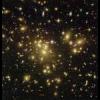I was double checking the solubility of NAD+, and found the data sheet by Sigma-Aldrich which shows it as 50mg/mL under the conditions they describe.. A snoot bottle holds 30 mL. It is supposed to yield 200 sprays, so about 7 sprays would yield 50 mg of NAD+. The badly formatted (sorry) text follows, but a link directly to the pdf is at the end.
b-Nicotinamide adenine dinucleotide
Product Number N1511
Storage Temperature -0 °C
Product Description
Synonym: b-NAD, DPN
This product is crystalline b-NAD which contains less
than 0.1% (w/w) residual organic solvents, is less
hygroscopic and electrostatic, and is more stable at
ambient temperatures than amorphous NAD.
b-NAD, a pyridine nucleotide and biologically active
form of nicotinic acid, is a coenzyme necessary for the
catalytic reaction of certain enzymes. b-NAD is a
carrier for hydride ion, forming b-NADH. Hydride ion
is enzymatically removed from a substrate molecule
by the action of dehydrogenases such as malic
dehydrogenase and lactic dehydrogenase. Such
enzymes catalyze the reversible transfer of a hydride
ion from malate or lactate to b-NAD to form the
reduced product, b-NADH. Unlike b-NAD which has
no absorbance at 340 nm, b-NADH absorbs at 340 nm
(E
mM
= 6.22). The increase in absorbance at 340 nm
with the formation of b-NADH is the basis for
measurement of activity of many enzymes.
Many metabolites and enzymes of biological interest
2,3
are present in tissues at low concentrations. With the
use of b-NAD as a catalyst intermediate and several
enzymes in a multistep system, known as enzyme
cycling, much greater sensitivity for detection of these
components is achieved. The reduced form, b-NADH,
is fluorescent whereas b-NAD is not. This difference in
fl uorescence provides a sensitive fluorescent
measurement of the oxidized or reduced pyridine
nucleotides at concentrations down to 10
7
M.
Precautions and Disclaimer
For Laboratory Use Only. Not for drug, household or
other uses.
3,4
1
Preparation Instructions
b-NAD is soluble in water (50 mg/ml), yielding a clear,
colorless solution (gentle heating and sonication may
be necessary). Aqueous solutions can also be
prepared by adjusting the pH to 7 with either sodium
hydroxide or sodium bicarbonate buffer.
Storage/Stability
b-NAD is very hygroscopic and should be stored
desiccated.
5
Aqueous solutions between pH 2 - 6,
stored as single-use aliquots at -70 °C, are stable for
at least 6 months. Neutral or slightly acidic solutions
are stable at 0 °C for at least 2 weeks. Solutions are
rapidly degraded upon heating and are very labile in
alkaline solutions, especially in the presence of
phosphate, maleate, or carbonate. The rates of
degradation of solutions at different pH and
temperature conditions have been reported. Solutions
are also sensitive to light.
6,7
References
1. Specifications and Criteria for Biochemical
Compounds, 3rd ed., National Academy of
Sciences (Washington, DC: 1972), p. 87.
2. Methods of Enzymatic Analysis, Volume 4, Hans
Ulrich Bergmeyer, Academic Press, Inc., (New
York, NY:1974), 2066-2072.
3. Enzymatic Analysis, A Practical Guide,
Passonneau, J.V., and Lowry, O.H., The Humana
Press, Inc., (Totowa, NJ:1993), 3-4.
4. Enzymatic Analysis, A Practical Guide,
Passonneau, J.V., and Lowry, O.H., The Humana
Press, Inc., (Totowa, NJ:1993), 85-110.
5. The Merck Index, 13th, Entry# 6370.
6. Data for Biochemical Research, 3rd ed., Dawson,
R. M. C., et al., Oxford University Press (New
York, NY: 1986), p 130-131.
7. Lowry, O. H., et al., The stability of pyridine
nucleotides. J. Biol. Chem., 236, 2756 (1961).
ARO/RXR 5/06
Sigma brand products are sold through Sigma-Aldrich, Inc.
Sigma-Aldrich, Inc. warrants that its products conform to the information contained in this and other Sigma-Aldrich publications. Purchaser
must determine the suitability of the product(s) for their particular use. Additional terms and conditions may apply. Please see reverse side of
https://www.google.c...tx1Cr8XaykeBCeG
































 This topic is locked
This topic is locked














